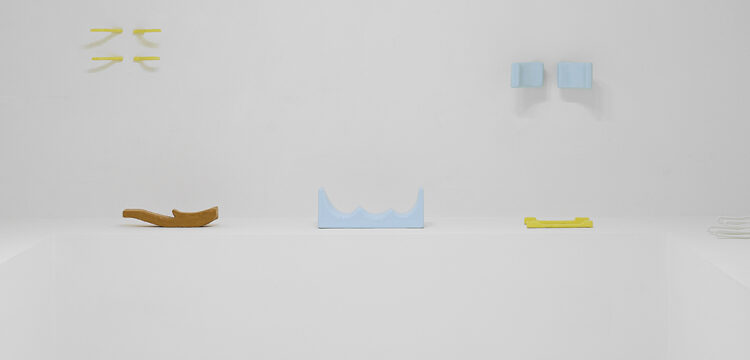Celebrating Burials
The afterlife of modern civilization
Curated by Anselm Franke, Elisa Giuliano, Denise Ryner, Claire Tancons and Zairong Xiang the exhibition project Ceremony took place at HKW till December 2022. Foregrounding the life and the afterlife of modern power models and world-making knowledge structures, the project has inquired these questions by reading through two essays by Jamaican writer and philosopher Sylvia Wynter: The Ceremony Must be Found: After Humanism (1984) and The Ceremony Found (2008).
What kind of storytellings have been inherited from the modern era? How are they formalized in systems of representation/transmission and rituals of power control? How do these stories legitimize themselves? How are cosmogonies and cosmologies deeply entangled within secularism in the system of Western capitalist civilization and the colonial project? If these questions have been raised by many thinkers and artists in the last decades, institutions and institutional exhibition formats have been slower to address their own complicity to that.
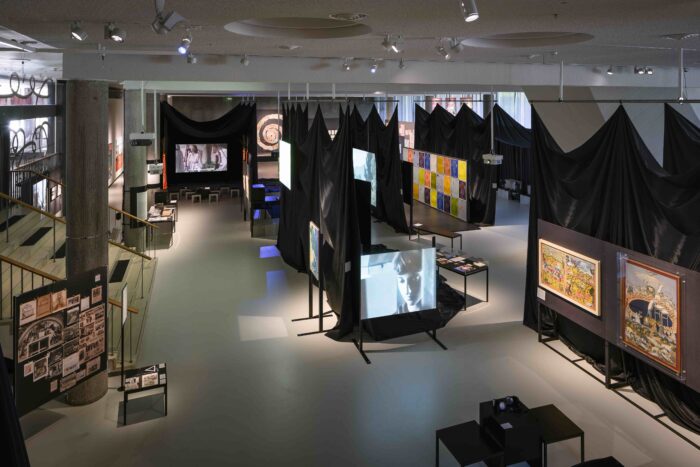
Without any fixed itinerary for the visitor, works of various genres and time-periods as well as historical documents have been organized by the curators either in constellations that follow a serpentine movement or gathered in a theatrical setting, the latter conveying an additional layer on the stage of the human world’s narrative. In this setup burials are central: they overturn the symbolic codes of life and death on which cosmogonies are built on. In the project, burials become ceremonies of a sort of “afterlife of modern civilization” while we are still within it, as suggested by the subtitle of the project: burial of an undead world.
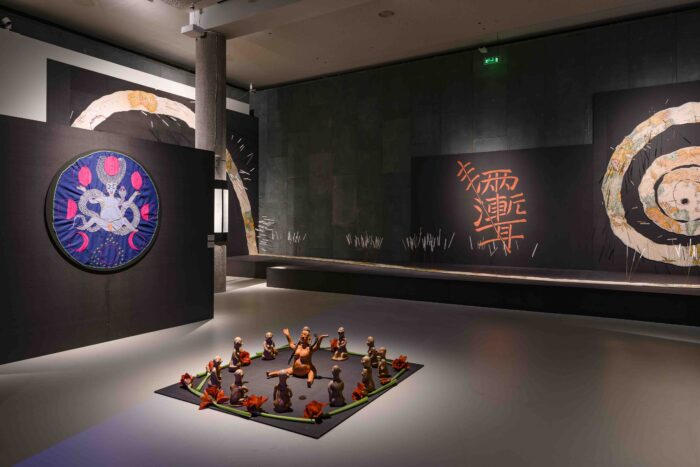
In particular, the film This is not a Burial, It’s a Resurrection (2020) by Lemohang Jeremiah Mosese narrates a reconciliation of life and death and, indirectly, how the activity of creating the world repeats itself every moment, just as the end of the world constantly repeats itself. “End of the World” is the title of a section of the exhibition inspired by the last book by Italian anthropologist Ernesto De Martino who questioned the crisis of societies by analyzing the fragility of cosmologies. Influenced by De Martino’s texts, Luigi Di Gianni’s film Magia Lucana (1958) shows a coexistence of past and present, Christian and non-Christian beliefs, religion and magic in southern Italy, next to documents and works, including The Prison Notebooks by Antonio Gramsci and two paintings by the Jewish writer and artist Carlo Levi, both confined in the South during fascist regime.
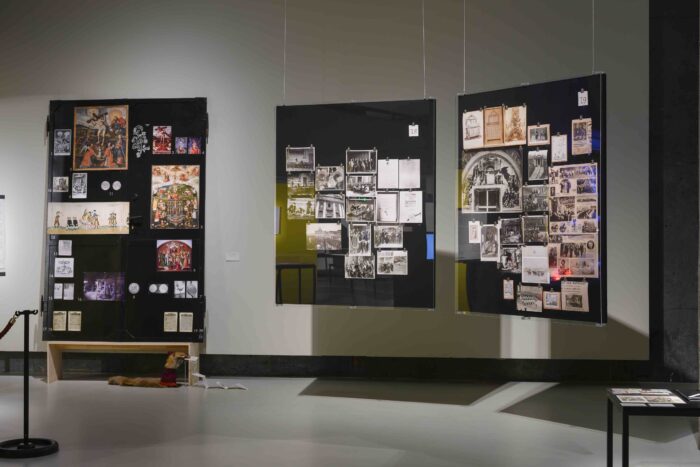
Outside this section, Southern Italy returns as a countercosmogony with the city of Naples, a place on earth that does not belong to a hegemonic narrative, but shows alternative codes deployed in everyday life, such as in its relationship with the realm of death. The Neapolitan nativity scene Così si Ama (2022) by Pauline Jardin Curnier and the film Le Sibille (1978) by the Neapolitan collective Le Nemesiache are artworks based on narrations entangled by a sort of co-belonging and co-authorship with the dead and with other temporalities, deploying liminal subjectivities that overcome the binary structures of modernity. Unlike the “neutral” or supposedly “neutral” observer in yesterday’s anthropology, liminality is at the core of the exhibition, infiltrating itself between oppositional realms, and opening a portal into the superstitions reiterated by modern storytellings. This generates tensions between transparency and opacity felt in the experience of what the exhibition has shown, and instills the possibility of renegotiation directly within the interstitiality of the codes that define them.
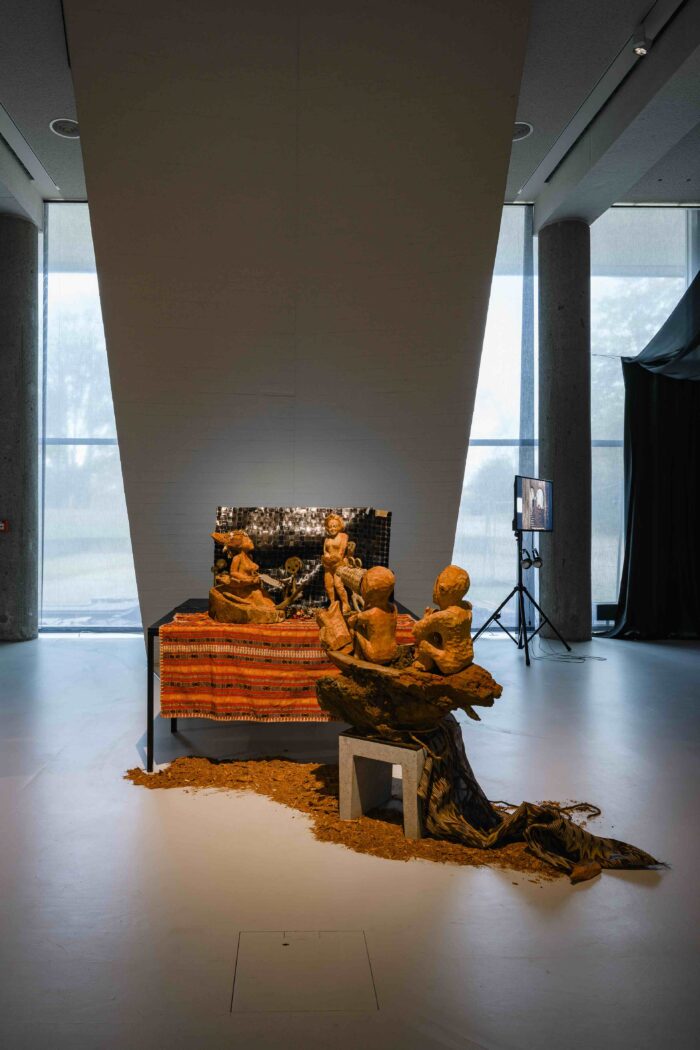
This way the ceremony reverberates through many axes and symbolic shifts. In Diana’s Looking Glass (1966) by Angela Lucchi and Yerviant Gianikian, for examples, fertility myths connected to Lake Nemi in Italy from the old cult of Diana converged into the theatralization of the colonial campaign by Mussolini, showing how the ceremony has to be found. Differently, in Tabita Rezaire’s work Fertility Circle (2022) a new poesis for being human is suggested through an interspecies ancestral listening that infuses a sense of found ceremony. Hereby, upside-down images, reversal meanings, oppositional realms and lines of divisions, all collide in syncretic iconographies reshaping antagonism in hegemonic cultural codes as revealing, according to Wynter writings, the sociogenic divisions on which modern societies are shaped. This is particularly evident through the anonymous painting Assembly of Animals (around 1965 to 1975), immediately visible to the viewer from the entrance stairway of the hall as a key image. The painting depicts an imaginary primordial era where animals and humans shared the same language. The line dividing the painting in two parts shows a peaceful scene amongst animals and below a hunting scene: cosmogonic images of chaos and order, life and death, hunters and prey. This origin story is reshaped through Christian codes: a dove stands over the Lion. The same image symbolizes the ceremony of the crown of the last emperor of Ethiopia/Abyssinia Haile Selassie, whose power is legitimated as coming from God. The syncretic sedimentation of meanings within the painting, resonates in the exhibition through additional correspondences in oppositional political narratives. If Haile Selassie, known as the “Lion of Judah’’ is a materialization of the Messiah for the the Rastafari Movement thanks to the role that Ethiopia plays into decolonial imaginary, at the same time the lion appears in another photo in Mussolini’s arms thus becomes a symbol of his power, revealing how the same image can be used by a counter hegemonic movement as well as a colonial invader.
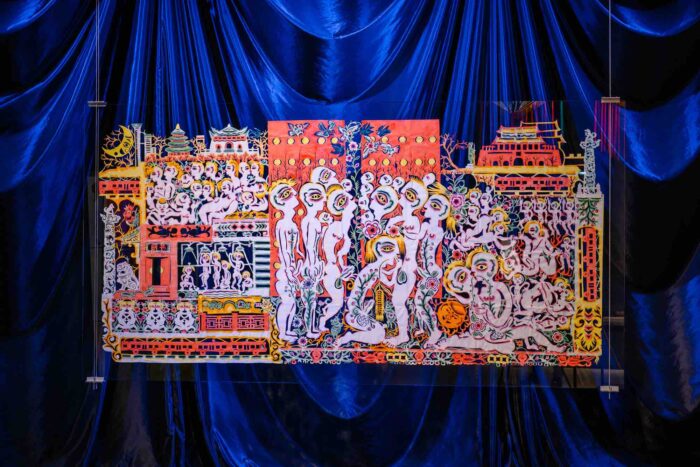
As “the colonization of the planet did not occur exclusively in economic and military terms, but primarily through the production of knowledge”, capitalism and colonialism are presented in cosmological terms, by showing how the origin stories behind them institute the system of divisions we still live in. In this sense, an entire section of the project shows the birth and rebirth of the modern world: many modern art history documents from Michelangelo to Mnemosyne Atlas are presented as genealogical background for contemporary media videos and political speeches displayed in the same area. Simultaneously, this ax of the project intersects with artworks that reverse the social order through processions, parades and masquerades. Among them, Burial of this Order (2022) by artist Jane Jin Kaisen is a video installation where a supposed Confucian ritual burial transforms itself in a carnivalesque procession within the ruin of a modernist infrastructures, and whose political protest and insubordination of the order is masked behind its religious appearance. This work, like the entire exhibition, suggests an implicit possibility to reverse the origin myth on which divisions are mounted, in order to find a common matrix on which a different humanity can be narrated. Origin stories humans use to give themselves some order are presented in the project through ceremonies from which it is possible to rethink depolarized narratives as common knowledge and heritage that can translate the process of permanent reconfiguration to constitute our living together on the planet.
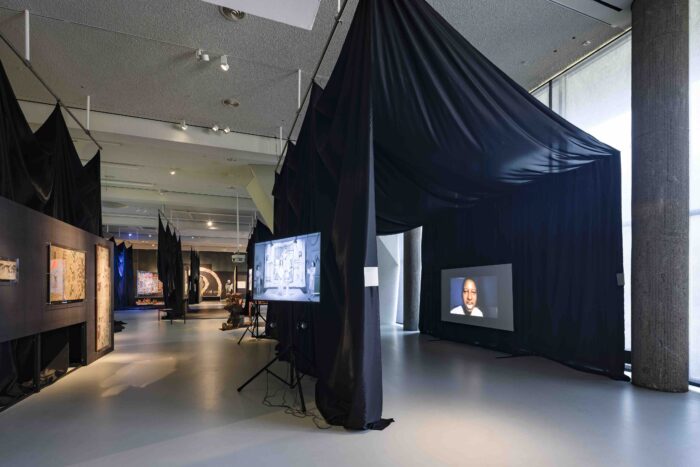
Coincidentally with the end of a cycle into the artistic direction of the institution, the project presents the ceremony as a transition to a new narrability beyond the divisions produced by modern mythopoeia, showing the way origin stories create the conditions of their own storytellings. If Wynter teaches us about the discursive construction of man, the project suggests ways of thinking, being, understanding different from modernist settings, insinuating heretical rituals and storytellings into the supposed original fixity and predetermination of cosmogonies. Nevertheless many questions arise, perhaps suggesting that many ceremonies are yet to be celebrated into the future so to bury a past world/mundus and communicate with and beyond its ruins.




